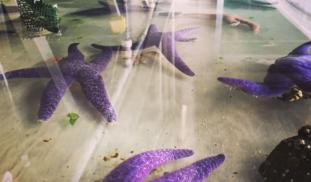Please wait...
About This Project
Recently, a devastating epidemic called "sea star wasting disease" (SSWD) has killed huge numbers of sea stars on the west coast of North America. One common and ecologically important species (Pisaster ochraceus) has a mutation that seems to protect carriers. Here, I will use high-throughput RNA sequencing to identify how that mutation alters the tissue and cellular composition of sea stars. These data will be key in predicting how Pisaster will recover from this disease outbreak.
More Lab Notes From This Project

Browse Other Projects on Experiment
Related Projects
Urban Pollination: sustain native bees & urban crops
Bee activity on our crop flowers is crucial to human food security, but bees are also declining around the...
Wormfree World - Finding New Cures
Hookworms affect the lives of more than 400,000,000 men, women and children around the world. The most effective...
Viral Causes of Lung Cancer
We have special access to blood specimens collected from more than 9,000 cancer free people. These individuals...








